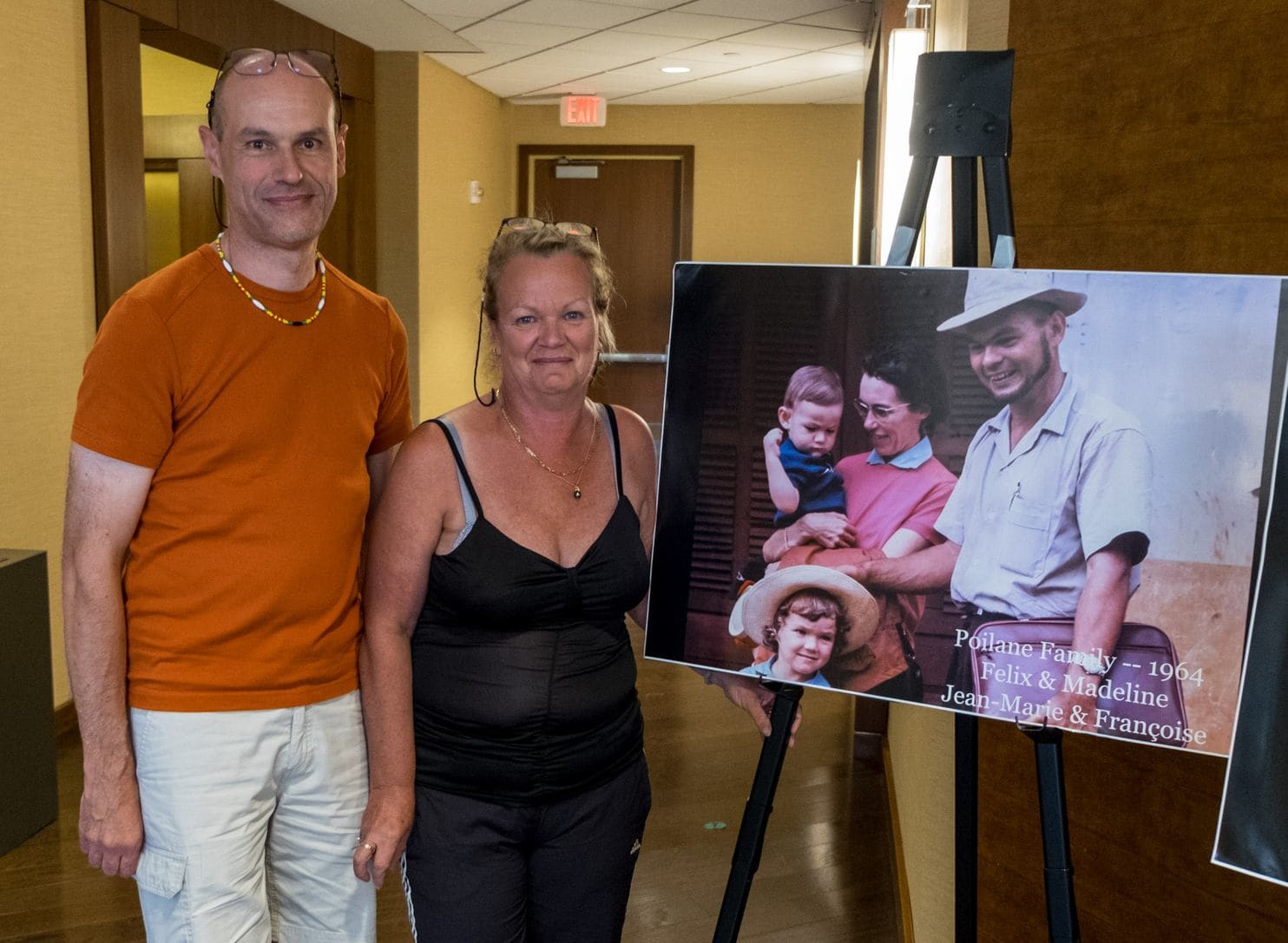The U.S. Marines would often see the girl as they emerged from the jungle, tense from their patrols, aching from their loads, sweaty and bug-bitten. She was a vision, like something from a dream: an 8-year-old blond girl sitting on the steps of a French-style villa.
It was the autumn of 1967, near a South Vietnamese village called Khe Sanh.

“It was jarring to see her in the middle of that, knowing the fight was coming,” said Dennis Mannion, 72, a Marine from Connecticut. “That was going to be the most dangerous place on Earth in two months.”
Last week, Mannion and about 300 other Marines, along with a few Army Special Forces veterans, gathered at the Hyatt Crystal City to mark the 50th anniversary of the Battle of Khe Sanh, the bloody siege in the winter and spring of 1968.
Also there as special guests: that girl, Françoise Bisiaux, 58, and her brother, Jean-Marie Poilane, 55.
They are the grandchildren of Eugène Poilane, a Frenchman who carved out one of the first coffee plantations in the land around Khe Sanh.
Like many young French men (and, later, American ones), Eugène arrived in Vietnam as a soldier, in 1908. Smitten by the landscape, he stayed. A self-taught naturalist, he collected thousands of samples of plants and animals, sending them to museums around the world, including the Smithsonian.
Eugène started a coffee enterprise that his son, Félix, later managed, employing dozens of local people known as Montagnards.
“We had all we wanted there,” Françoise said.
“For us, it was like paradise,” Jean-Marie said.
The plantation became something of an Eden for the Americans, too, if an incongruous one. Ted Showalter, 79, a West Point graduate who arrived in Khe Sanh in 1964 with the Green Berets, remembered thinking: “How in the world can these people survive out here …?”
The Poilanes gave the Americans fruit from their orchard and invited officers to sip Pernod at their dining room table. When all the bridges on Highway 9 were blown up, the troops offered space on cargo planes so that bulging burlap sacks full of coffee beans could be sent to markets on the coast.
But war was coming — had long been there, in fact. In 1964, Eugène died in an ambush… And in January 1968, the Marines finally forced the Poilanes to evacuate. The family went first to Danang, and then to Hue, where Françoise and Jean-Marie had been born.
The siege was broken in April 1968 at a cost of 274 American lives and those of nearly as many South Vietnamese soldiers. The estimate of North Vietnamese casualties runs into the thousands.
Félix begged to return to check on his ripening coffee. On the day before Easter, he boarded a military plane for the quick hop. The plane came under enemy fire as it landed, sliding off the runway and crashing. Félix was the only person killed. His widow, Madeline, and the children — along with two of their aunts, Eugène’s half-Vietnamese daughters with his second wife — had no choice but to leave for France.
“It was very difficult for my mother,” Françoise said.
In 2014, Mannion asked a friend in Paris if she could help track down a family he had known briefly in Vietnam. She was able to. Mannion then persuaded the leadership of the Khe Sanh veterans group to bring Françoise, Jean-Marie and their spouses to Washington.
“My biggest joy is seeing other veterans talk to them, talk to them about their parents, talk to them about seeing their house,” Mannion said.
At the Hyatt, graying Marines peered at a set of photos set up on easels. Here was Jean-Marie in his mother’s arms. Here was Françoise in a red dress, sitting outside the Khe Sanh house and watching as U.S. troops single-filed past.
The siblings spent their week in Washington sightseeing, including visiting the Vietnam Veterans Memorial. France has no equivalent to the Wall, they said. The Vietnam War is not something that’s discussed there.
That’s why this trip had been so important to them. It was a chance to be with some of the only people who understood what it was like to be at that place, at that time.
There was another photo of the Poilane villa, taken by Robert Shippen, 71, a Special Forces medic from Watsonville, Calif. It’s from after the siege. The house is blackened and splintered, destroyed by a bomb from a B-52.
Shippen said he wasn’t sure he should show it to Françoise.
“She teared up,” he said. “But she was appreciative of seeing it.”
By John Kelly
Full article:
U.S. veterans of Khe Sanh had some special guests at their reunion
https://www.washingtonpost.com/local/us-veterans-of-khe-sanh-had-some-special-guests-at-their-reunion/2018/08/20/6ea38e2c-a490-11e8-97ce-cc9042272f07_story.html
